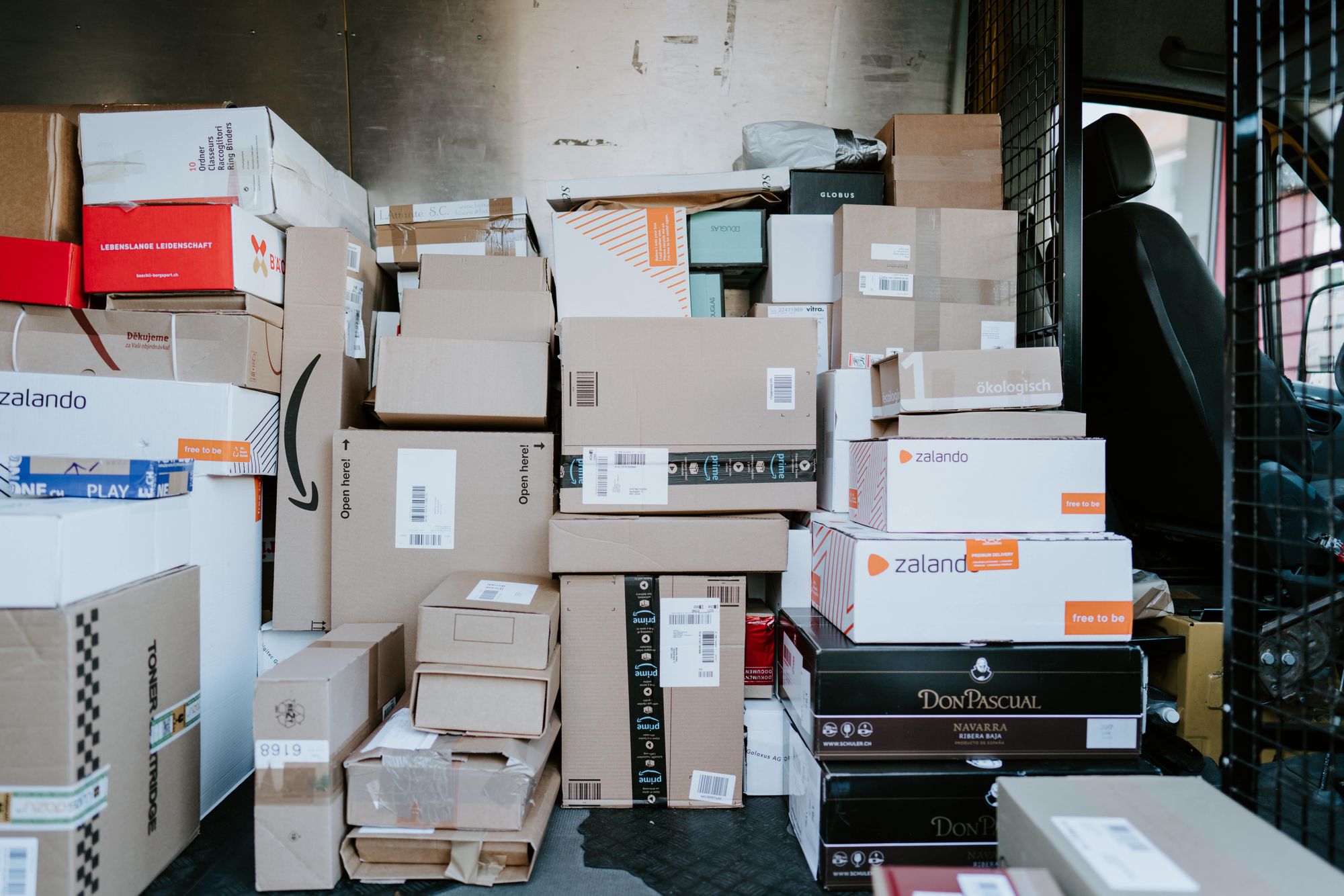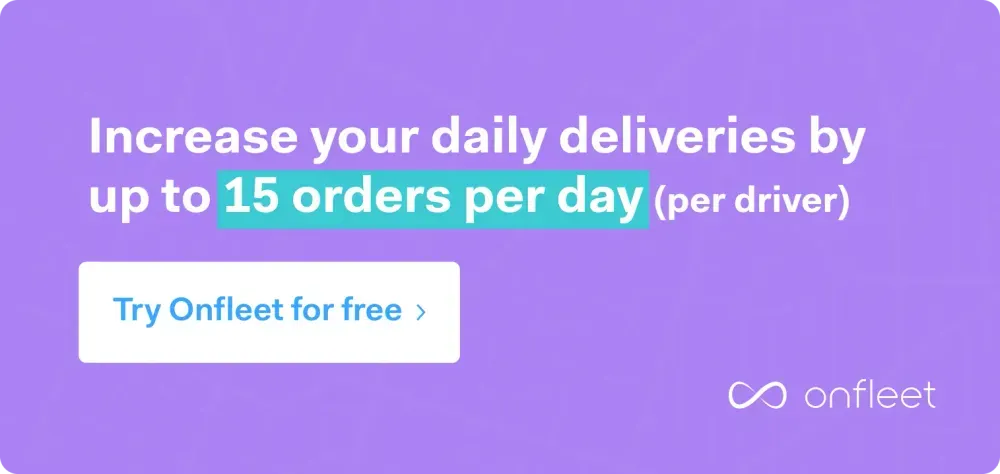
Delivery management is the application of processes that ensure the effective and efficient transfer of goods from one location to the next. Sometimes called dispatch or fleet management, it answers the question, “How do we get this item from point A to point B?”
As consumer expectations continue to rise, delivery management has never been in greater demand. In this article, we’ll discuss the benefits of effective delivery management, how to evaluate your delivery processes, and how to use software to improve delivery operations.
Note: “Delivery management” can also refer to a general project management function that focuses on completing projects and controlling other business processes. This article focuses on the version that relates exclusively to delivery as it relates to the movement of goods.
Who is in charge of delivery management?
The person in charge of deliveries is usually called a delivery, logistics, or dispatch manager. In smaller companies, they are often the middle point of contact between warehouses and couriers. In more robust operations where orders are programmatically processed, delivery managers tend to focus on problem spots like delayed orders.
Why is delivery management critical?
Now let’s take a look at five key reasons delivery management matters.
Profitability
Streamlining your delivery processes helps you deliver more products in shorter time frames, which boosts profitability.
Competitiveness
Whether you’re delivering your own products or handling last-mile delivery for another business, you must be efficient to remain competitive. Customers have other options, and so do shippers, so you can’t afford delayed deliveries.
Customer satisfaction
Customers expect on-time deliveries, but perhaps more importantly, they want to know where their items are at all times. Delivery management software can provide real-time tracking information that improves customer satisfaction.
Fuel costs
Fuel accounts for about 10% of each delivery cost, so you need to optimize routes and batch deliveries to minimize fuel costs.
Courier retention
Hiring and training couriers take time and money, and employee turnover can drain resources. Effective delivery management can help retain drivers because it minimizes stress and confusion. For example, with a delivery app, drivers get turn-by-turn directions to their destination and can communicate with dispatchers and customers.

How do you evaluate your delivery management?
Not sure whether you need to improve your delivery management? Here’s a quick way to evaluate your processes:
Review route efficiency
Are you manually planning routes? Are your couriers making multiple separate delivery runs during their shifts? Is Waze or Google Maps the only technology your drivers use for deliveries? A “yes” answer to any of those questions means you could improve your delivery management.
Know your on-time delivery rate
Calculate your on-time delivery rate — it should be 95% or higher. If not, you’ll need to determine which part of your delivery management process isn’t working effectively.
Assess driver productivity
Productivity is about more than just getting a package to its destination. It also means using time wisely. For example, a driver could deliver a package quickly but then spend 15 minutes browsing Facebook before returning to the hub for a new load. If you see inconsistent productivity across your fleet, you may need delivery management software that helps you track performance.
Audit your customer-facing processes
Customers expect transparency and communication throughout the delivery process. Periodically review how you interact with customers to ensure you’re using the best technology for improving the customer experience. Any tool you use to automate customer service — such as software that sends customers predictive ETAs — will reduce admin time for your service team and reduce the volume of incoming customer inquiries.

How do you improve delivery management?
Whether you’re a startup or a multi-national juggernaut, delivery management is all about process improvement. Delivery operations managers constantly strive to reduce costs by completing more deliveries with fewer resources (labor hours, vehicles, fuel) while maintaining a high level of customer service. Delivery managers regularly leverage several tools and strategies for improving their metrics and scaling up their operations.
Route planning and optimization: Instead of manual route planning, you can use a route optimization algorithm to generate more efficient routes in less time. Advanced optimization software can factor in constraints like delivery windows, vehicle capacity, driver schedules, and even traffic patterns to suggest the optimal route for drivers. Route optimization can also generate estimated arrival times for internal and customer communication purposes.
Automated dispatch: Running an on-demand delivery business at scale requires automating the dispatching process to some degree. Unlike scheduled deliveries, which can leverage forward-looking route optimization, on-demand businesses need to be able to dispatch on the fly as new orders come in.
Instead of trying to contend with a wave of incoming orders, organizations like Food Connect use route planning software to programmatically assign orders to nearby drivers who can complete the order within the allotted time frame. Automating dispatch frees up a delivery manager’s time to focus on handling exceptions and ensuring customers are satisfied.
Vehicle tracking: Is a driver on the way to their next delivery or accidentally heading in the opposite direction? Are they stuck in traffic? Real-time visibility into vehicle locations can help dispatchers understand when a driver may be off course, avoiding costly delays.
Customer support teams can also access vehicle tracking to inform customers when their delivery will likely arrive. Companies like Caliva use vehicle tracking technology to comply with California regulations for their industry while Leon & George uses the same data to provide their customers with a great experience as they wait for their delivery.
Proof of delivery: Some deliveries require a customer's signature to confirm receipt of a package. Delivery operations software can collect contactless signatures and use barcode scanning to ensure the right package (and only the right package) is delivered to the right person. This chain of custody is especially important for pharmaceuticals and other sensitive deliveries.
Reducing liability costs: Tracking fleet metrics and driver behavior can reduce your costs of insurance if you give your insurer access to this data.
Team and customer communication: In an ideal world, your drivers and dispatchers might never need to communicate via text or voice. However, in the real world, it is absolutely essential to facilitate accessible communication between team members.
If a driver is having trouble finding a dropoff location or reaching a customer, their first call is often to their dispatcher for guidance. This guidance is one of the key components of delivery management. With real-time chat, dispatchers can see the driver’s location and the details of their active delivery as they communicate with the driver.

Is it time for delivery management software?
Whether you’re using a manual process of managing multiple spreadsheets and calling delivery drivers or using robust delivery management software, the end goal is always the same: to get the customer what they ordered when they want it.
If you’re looking to improve your delivery management process and would like to learn more about doing it with delivery management software, feel free to drop us a line. We’d love to hear what you’re up to.
Related Reads You Can't Miss:
- Why Scheduled Delivery is The Key to Happy Customers
- How to Succeed at Last Mile Delivery With Route Management
- Dispatch Management System: A Guide [with a case study]
- How to Choose the Best Courier Management System
- How to Compete with Amazon: In-House Last Mile Delivery

